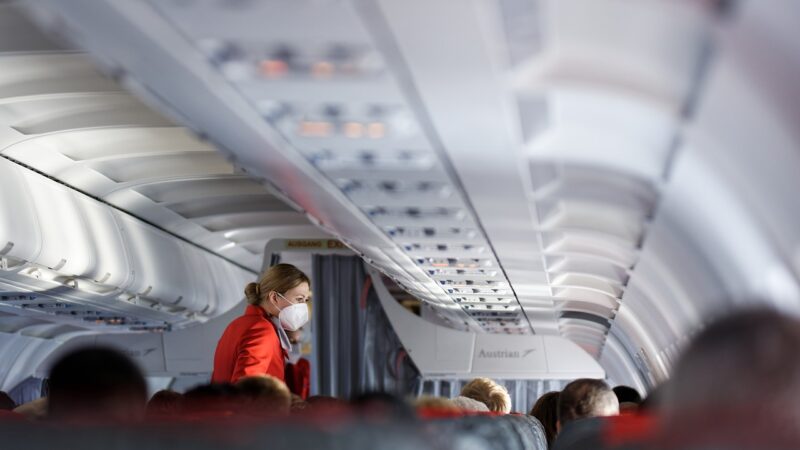
The role of a flight attendant is often romanticized in movies and media. With the picturesque backdrop of high-flying adventures and the allure of international travel, many dream of taking to the skies as a member of airline cabins. However, the reality of a flight attendant’s life involves much more than just serving drinks and snacks at 30,000 feet. This article delves into the complexities of being a flight attendant, covering everything from daily responsibilities to the challenges and rewards of this unique profession.
1. The Role of a Flight Attendant
Flight attendants are vital crew members who ensure passenger safety and comfort during flights. Their primary responsibilities include:
- Conducting pre-flight safety checks and demonstrations
- Assisting passengers with boarding and finding their seats
- Serving meals and beverages during the flight
- Responding to passenger inquiries and providing assistance
- Addressing medical emergencies and issues that arise on board
- Conducting post-flight checks and ensuring the cabin is secure
While many might envision flight attendants as simply hospitality workers in the skies, their job demands quick thinking, strong interpersonal skills, and comprehensive safety training.
2. Training and Certification
Becoming a flight attendant requires extensive training. Most airlines have a rigorous recruitment process that includes interviews, background checks, and health assessments. Once hired, new flight attendants undergo comprehensive training programs that can last several weeks. This training often encompasses:
- Safety and emergency procedures, including evacuation protocols
- First aid and CPR certification
- Customer service training to manage passenger relations effectively
- In-depth knowledge of aircraft operations and cabin equipment
- Cultural sensitivity training for international flights
Upon completion of training, flight attendants must pass a certification exam administered by the Federal Aviation Administration (FAA) or the relevant aviation authority in their country to become fully qualified.
3. A Day in the Life of a Flight Attendant
The daily routine of a flight attendant can significantly vary based on flight schedules. A typical day might look like this:
- Pre-Flight Routine: Flight attendants usually arrive at the airport several hours before departure. Their day begins with pre-flight briefings, where they discuss safety issues, review passenger counts, and confirm their respective duties aboard the flight.
- Boarding the Aircraft: They assist with boarding, checking boarding passes, and ensuring that passengers stow luggage correctly. This process also involves greeting passengers warmly and addressing any concerns they may have.
- In-Flight Duties: During the flight, flight attendants serve meals, provide drinks, and keep the cabin clean and organized. They must remain vigilant by monitoring passenger behavior and assisting with any special needs that arise. It’s not uncommon for flight attendants to deal with unexpected situations such as turbulence or health emergencies, requiring them to think quickly and act decisively.
- Post-Flight Responsibilities: Once the plane lands, flight attendants help direct passengers during disembarkation. After all passengers have exited, they conduct a thorough cabin check to ensure nothing is left behind and that the plane is ready for its next journey.
4. The Challenges of Being a Flight Attendant
While many aspire to become flight attendants for the exciting lifestyle, several challenges accompany the job. Here are some of the more common struggles:
- Irregular Hours: Flight attendants often work long, irregular hours, including nights, weekends, and holidays. This can lead to difficulty maintaining a regular sleep schedule or social life.
- Physical Demands: The job requires prolonged standing, lifting heavy luggage, and maneuvering through cramped aisles, which can be physically taxing over time.
- Dealing with Difficult Passengers: Interpersonal conflicts can arise with passengers, which requires flight attendants to have exceptional conflict-resolution skills and emotional resilience.
- Health Risks: Flight attendants are frequently exposed to health risks, such as long hours of sitting and disrupted circadian rhythms. Also, they encounter colds and other illnesses from frequent travel across varied climates and locations.
Despite these challenges, many flight attendants find fulfillment in their roles, taking pride in their ability to connect with people from diverse backgrounds.
5. The Rewards of Being a Flight Attendant
Beyond the challenges, there are numerous rewards associated with being a flight attendant:
- Travel Opportunities: One of the most appealing aspects of the job is the chance to travel to various destinations around the world—often for free or at a reduced cost. Flight attendants frequently explore new cultures and create unforgettable memories during layovers.
- Flexibility and Variety: The job offers varying schedules that can allow for extended periods off. This flexibility also means that each day can bring new experiences, meeting different people and witnessing breathtaking views from the sky.
- Building Connections: The nature of the job enables flight attendants to form unique connections with passengers and fellow crew members, creating a diverse community of individuals with shared experiences.
- Impactful Work: Flight attendants play a crucial role in passenger safety and comfort. Many flight attendants find fulfillment in their ability to positively impact passengers’ travel experiences, particularly through challenging situations.
Ultimately, the combination of travel, connection, and impact makes being a flight attendant a rewarding profession for many.
Conclusion
In conclusion, the life of a flight attendant is a dynamic mix of challenges and rewards. Their dedication to ensuring passenger safety and comfort transcends the glamorous perception portrayed in media. While demanding, the role is filled with unique experiences, allowing flight attendants to discover the world while forging lasting connections along the way. Those seeking a career filled with adventure, diversity, and the chance to make a difference may find fulfillment in the skies.
As air travel continues to evolve, so too will the role of flight attendants, who remain an essential part of the airline experience—always ready to serve, assist, and adapt to the ever-changing world of aviation.








